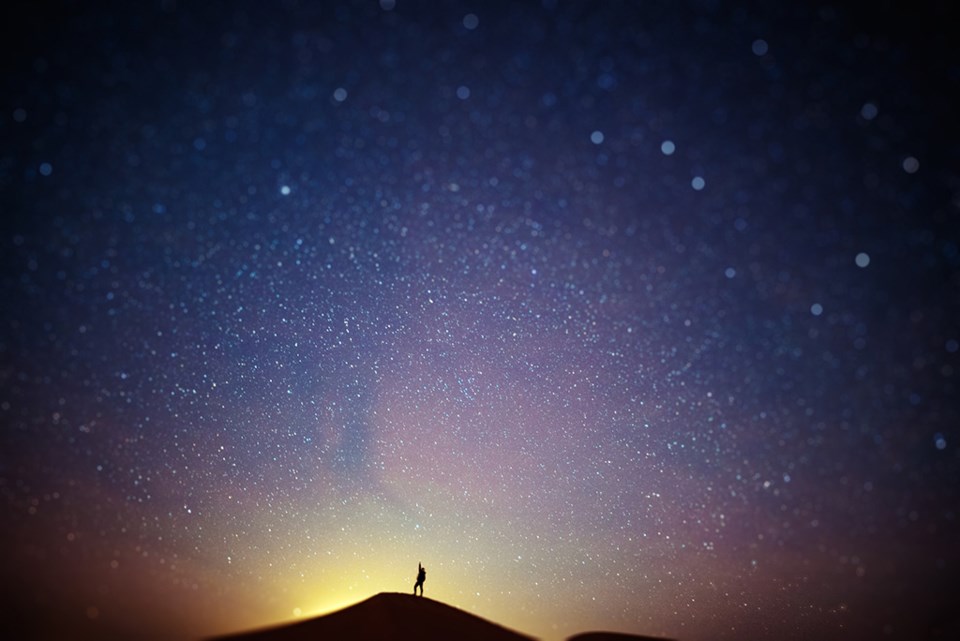The moon begins March sitting a few degrees south of Saturn in the eastern morning sky, just before sunrise, with Mercury close nearby. The moon is new March 2, so you’ll likely have a tough time seeing any of these events – a real observational challenge. By March 7, Uranus is within 0.8 degrees, so the moon is a good guide of where to find the blue-green gas planet. Ceres also is in the same neighbourhood, only 0.3 degrees north of the moon March 9. Both of these conjunctions result in occultations, but in the 小蓝视频ern Hemisphere.
The moon’s orbit is not circular, but an ellipse, so there are times when the moon is further away from Earth and times when it is closer. “Further away” is termed “apogee,” and it occurs March 10, when our satellite is 404,268 kilometres distant. The moon is full March 18. “Perigee,” or “closest,” is March 23, when the moon is 369,760 kilometres away.
The end of the month brings several close encounters with the moon, beginning with Mars, Venus and Saturn March 27/28, then Jupiter March 20. This grouping should make for a good photo opportunity for the early riser, as it all happens in the morning eastern sky before sunrise.
Mercury is 0.7 degrees from Saturn March 2, and nudges closer to the sun with each passing day thereafter, becoming lost in the sunlight by mid-March. March 20, Mercury is 1.3 degrees south of Jupiter
Venus shines brightly in the morning eastern sky before sunrise, joined by Mars during the first part of the month. Venus reaches greatest elongation west (GEW) March 20 at 47 degrees west of the sun, then, March 29, is within two degrees of Saturn. The three planets, Mars, Venus and Saturn fall within a seven-degree binocular field during the last week of March, joined by the moon March 28 to 30.
Mars and Venus hang out together during the first two weeks of March, reaching conjunction March 12. The term “conjunction” meaning the two bodies are on the same meridian, an imaginary line from one pole to the other. As given above in Venus and the moon, the three planets, Mars, Saturn and Venus, are in a close grouping late in the month, joined by the moon March 28 to 30.
Jupiter is behind the sun for most of the month, making an appearance with the moon March 30.
Saturn is close enough behind the sun at the beginning of the month to be all but invisible, and by month’s end, joining up with Mars and Venus to be part of the planetary trio. March 29, Venus is two degrees north.
Uranus is occulted by the moon in the extreme south, but a close conjunction with the moon for March 7 northern viewers.
Neptune is too close to the sun to be seen.
Daylight Saving Time begins March 13.
March 20 is the vernal equinox, when the sun begins its steady climb north of the equator.
The zodiacal light should be visible from a dark site in the western evening twilight during the final two weeks of the month. This phenomenon is caused by the sun backlighting dust particles that are in solar orbit.
James Edgar has had an interest in the night sky all his life. He joined the Royal Astronomical Society of Canada in 2000, was national president for two terms, is now the editor of the Observer’s Handbook, and production manager of the bi-monthly RASC Journal. The IAU named asteroid 1995 XC5 “(22421) Jamesedgar” in his honour and he was recently awarded a Fellowship of the RASC.


